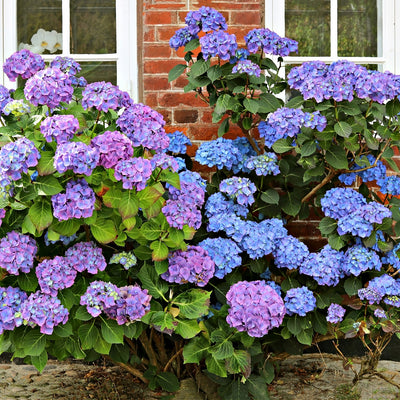Guide to Plants That Bloom in Specific Seasons
Certain flowering plants grow all year round, but some grow during specific seasons. The following all tolerate sun and shade.
Spring Plants
These plants can be planted in flower beds or gardens or used as border plants: lily of the valley, largeleaf phlox, White Hibiscus, daffodil, and Nikko blue hydrangea. The last two grow outdoors or indoors. Low-maintenance, easy-to-grow daffodils produce many blooms and survive up to two decades. Nikko blue hydrangeas attract insects.
The sweet-smelling, low-maintenance lily of the valley forms a ground cover and is an herb that helps with many ailments. It grows in almost any type of soil and attracts bees. Largeleaf phlox can be utilized as an ornamental. White hibiscus smells like sweet citrus and is safe from pests, infections, and diseases.
Summer Plants
The following plants grow indoors or outdoors and can be used as border plants or planted in flower gardens or beds: Shasta daisy, pee gee and snow hill hydrangeas, marsh hibiscus, Geranium, and Forsythia Shrub. Hardy, drought-resistant Shasta daisies spread rapidly and produced huge flowers.
The ornamental hydrangeas mentioned above are easy to care for and tolerate cold and hot climates.
Easy-to-maintain, durable marsh hibiscus proliferates and survives in various climates. Drought-resistant, low-maintenance geraniums produce edible leaves. Cold-tolerant, hardy forsythia shrubs multiply, attract butterflies and bees, and produce sweet-smelling flowers.
Fall Plants
Goldenrod, aster, creeping phlox, Wild Hydrangea Shrub, and red, pink, and purple hibiscus are all plants that grow in flower beds or gardens. The drought-tolerant, easy-to-grow goldenrod can create borders and produce pollen and nectar. It also withstands poor soil.
Aster attracts pollinators and grows in a variety of soils and climates. Its leaves produce a lovely scent.
Hardy, low-maintenance creeping phlox can be utilized as a ground cover and grows in various climates and soils. It attracts many insects. Drought-tolerant wild hydrangea shrubs can create borders, and pollen-rich flowers bring insects.
The hibiscus mentioned above can grow outdoors or indoors, are deer resistant, and are suitable for privacy.

